The series describing the Phase Changers (see here) began with a simple question: What if our ideas about marketing are all wrong?
What if the 4 P's, the product adoption cycle, the S Curve and the 60:40 Marketing Mix are fundamentally flawed ways of thinking about how it all works?
Imagine...
and yes, it's very hard to do...
If the 4p's...
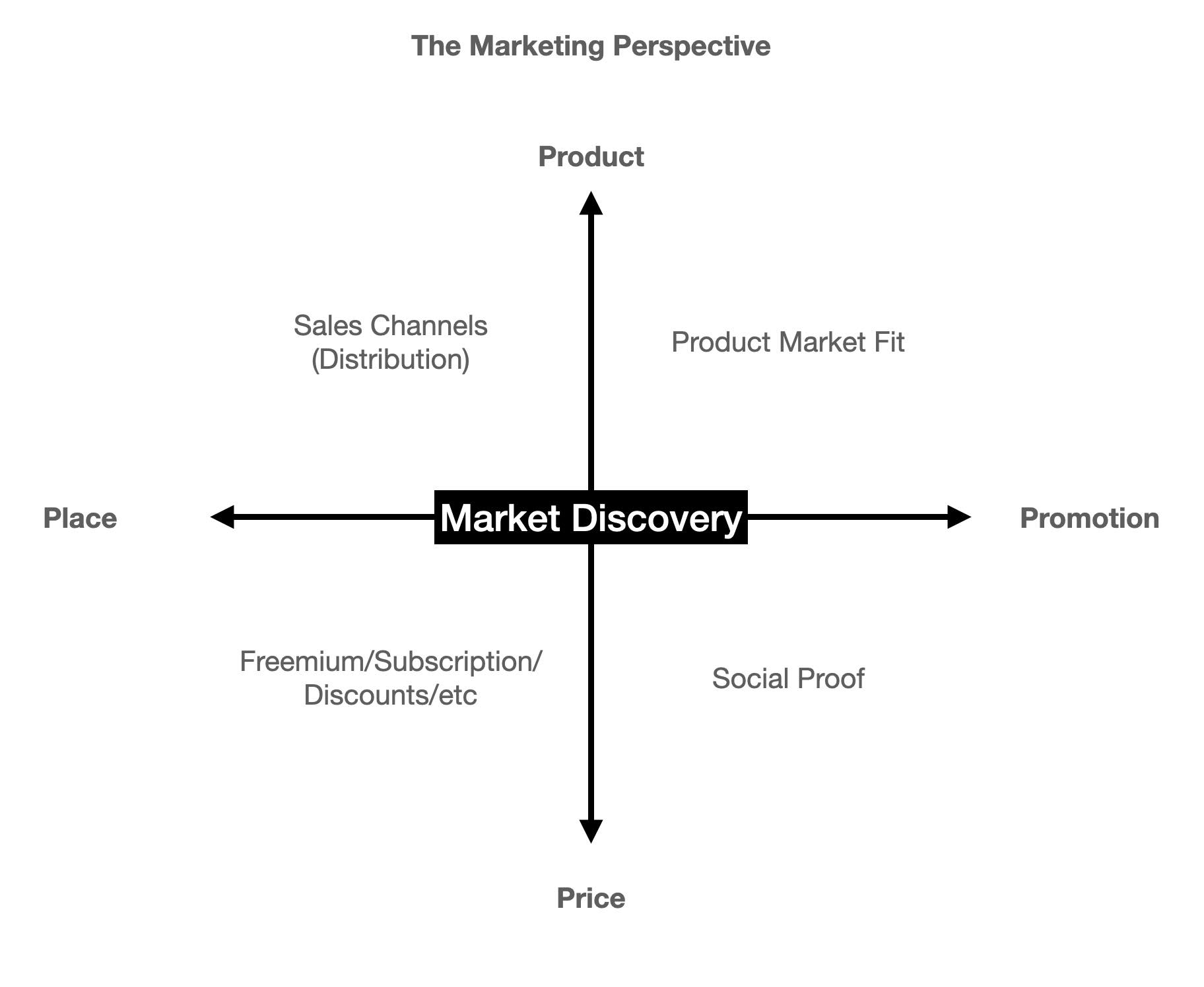
...looked more like the 2IC's
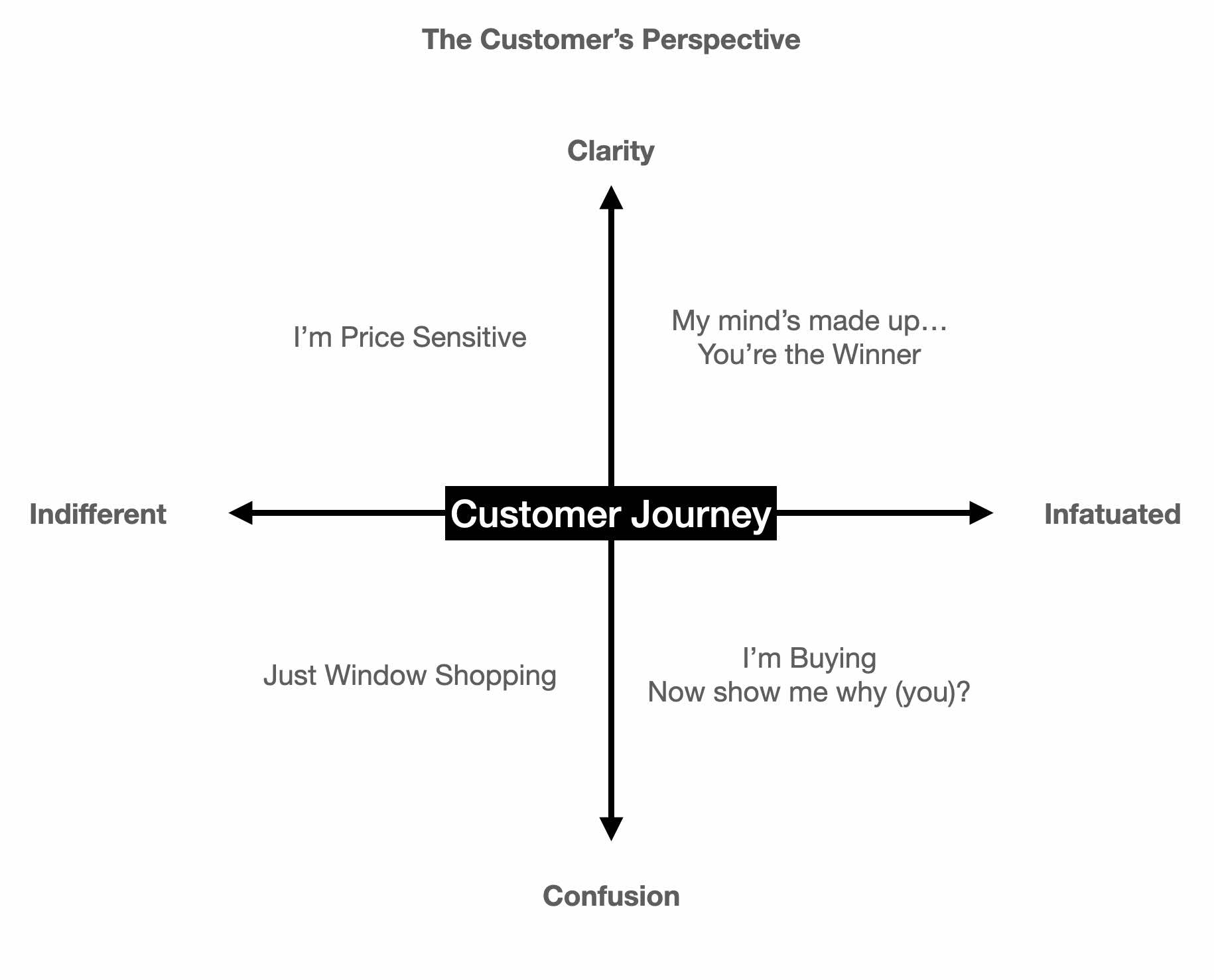
and how would that fundamentally change the way we measure success in the world of marketing?
This post is an attempt to close out that question (and clear up some of the confusion around Part 6 of the Phase Changes series) by introducing a new marketing funnel based on leveraging - or more accurately pivoting - the Phase Changes
At the core of Part 6 of the Phase Changes was this idea:
The common interpretation of the role of marketing when you have Market Leadership is building and maintaining a moat
But in that post I demonstrated how you could turn the Phase Changes matrix on its head... and once you do that you discover market leadership is best understood as a sink hole that the market gravitates towards and falls into rather than a mountain that needs to be climbed
The challenge then becomes one of making the edge of the funnel wide and frictionless so the market slips and falls in
Less a matter of brand building and more a matter of inviting the market to slide into your hands
In this post I will attempt to clean up that idea and make it more accessible to the average reader
Let's begin the thought experiment by saying anybody in the marketing game will know Sales and Marketing Models are a dime a dozen
For the most part they are designed to stimulate discussion rather than offer a practical guide
Within this broader context the model I am introducing here is no different
It's about prompting the question: What happens if we change our way of thinking?
In the 21st Century there has been a Cambria explosion in new ways of thinking, about how the customer thinks, they think, about thinking, when it comes to thinking, about thinking, about brands
BTW: See Ged Carroll's Notes on this topic
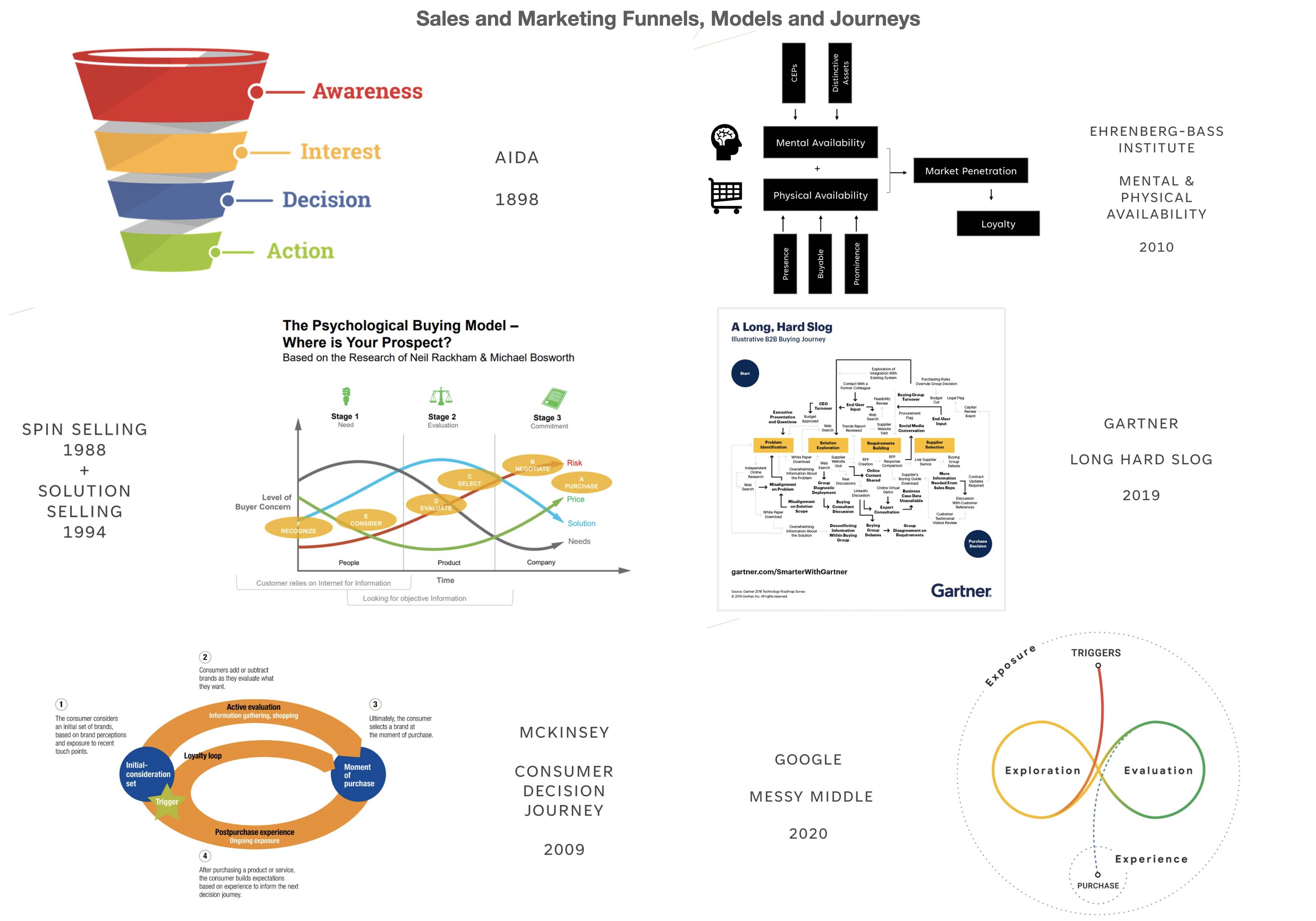
So how will adding another one into the mix change the way marketers think, about how the customer thinks, they think, about thinking, when it comes to thinking, about thinking, about brands?
Well let's try changing the game by changing the story and see what happens
The Phase Changes
The Phase Changes look like this
The underlying assumption is sales and marketing is about reducing or adding friction in the buyers mind (and across the market) to create the catalyst for a phase change
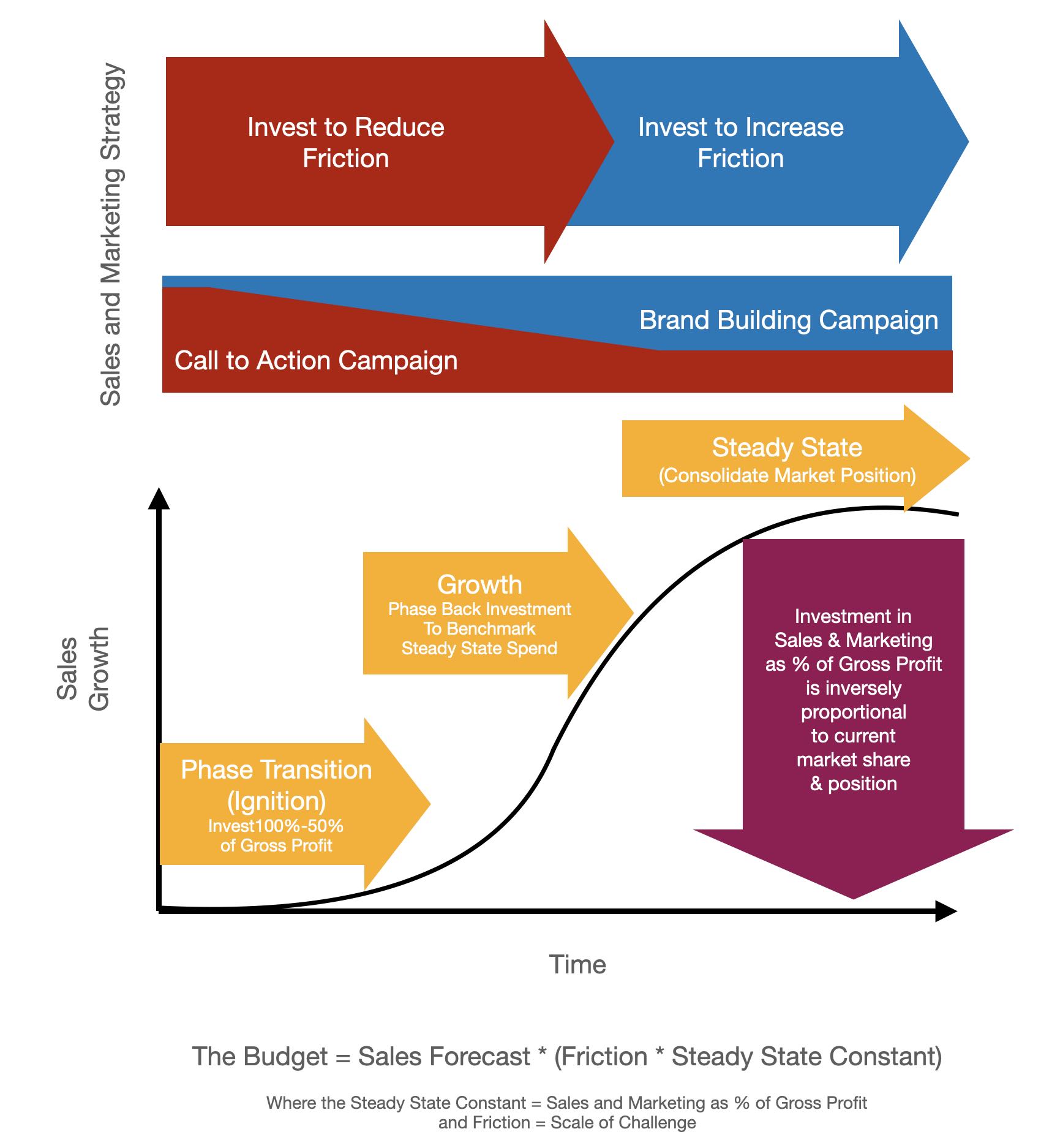
Again see here if you need a more detailed understanding of how the Phase Changes work
Now let's reimagine the challenge as a process loop
The undecided prospect occupies a place of inertia at one end of the loop
The loyal customer occuplies a place of inertia at the other end of the loop
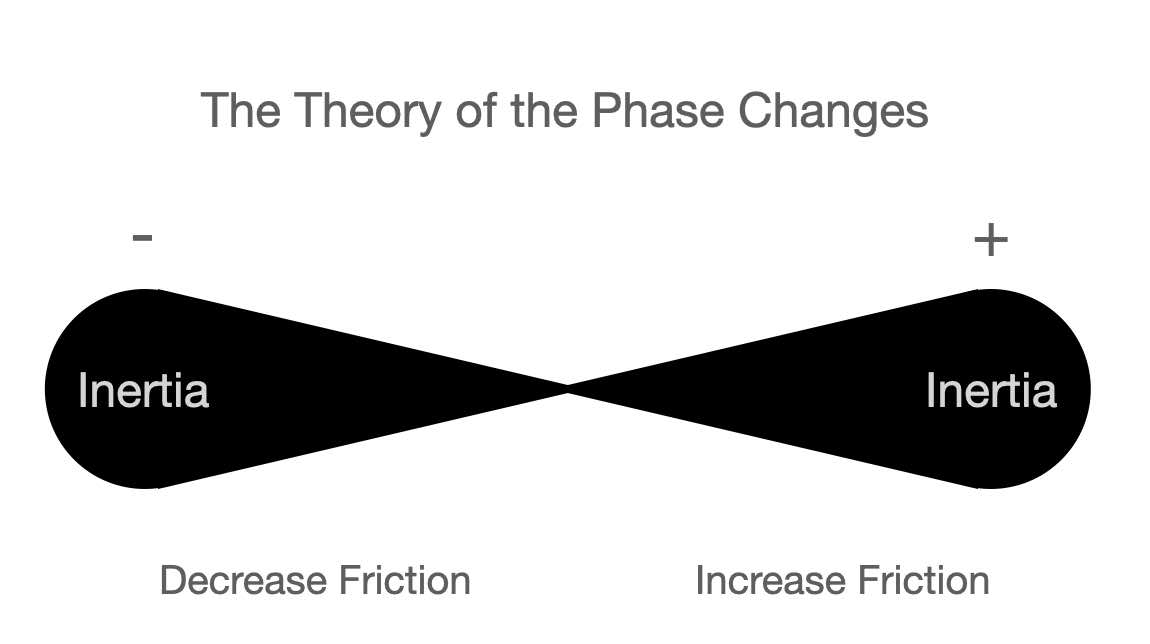
Obviously there are more prospects than paying customers... so we need to adjust the weightings to illustrate this
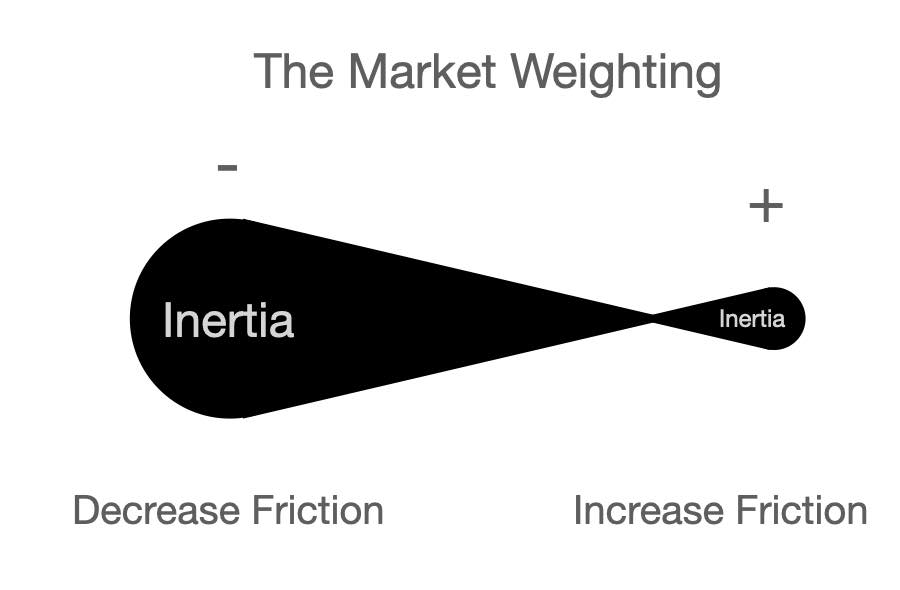
The sales and marketing challenge is to motivate the prospect to move from one side to the other
From negative to positive
and then get them to stick around
But hang on, because it isn't that simple
We need to demonstrate the impact of friction across the 'Egg Timer' loop

As we can see different customers have different journeys. The climb for some is much harder than others
The same can be said for the Brands. When you are up against the market leader your challenge is obviously much harder than if you are the market leader
Now let's add the key components required to motivate the prospect to make the uphill journey towards buying the product or service
We need to motivate the prospect. We need to give them a reason to move, we need to give them a reason to cross the chasm and we need to give them a reason to stay once they get there
- and the only tools we have at our disposal is a tigger, a story and a reward
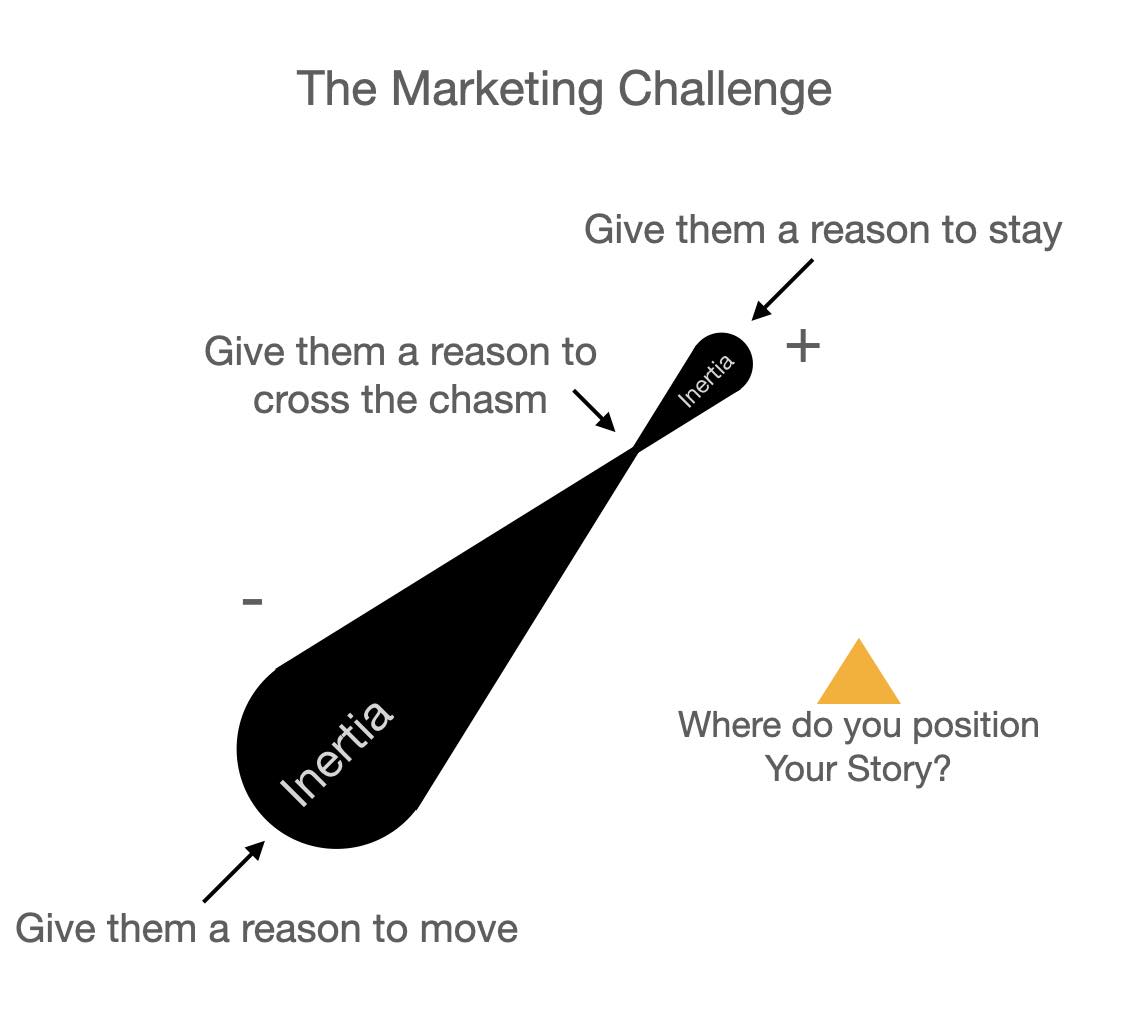
Now arguably we can see the marketing challenge more clearly
Not only do you need to get the prospect moving, they also have to encourage them to climb a mountain to get to the top where you are sitting waiting for them to join your band of loyal customers
The key to understanding the model is to recognise the role of the STORY as the FULCRUM : ie the point against which the 'Egg Timer' is placed to get a purchase, or on which it turns or is supported
The trick is knowing where to place (think: position) the story to achieve maximum leverage to tip the balance of the 'Egg Timer' in your favour
OK. Now we understand the scope of the challenge let's see how the different marketing strategies shape up trying to solve it
Performance Marketing
Today an increasing number of clever marketeers have cottoned onto the revelation: why do we need to talk to everybody when it is cheaper and more efficient to focus all our attention on those how have already made the journey up the hill and are ready to cross the chasm?
We call this performance marketing
It is the latest iteration of target marketing... and it is best understood as the sport of shooting fish in barrel
Success is easily quantified and can be measured endlessly... and it works just fine so long as somebody is wasting their time and money putting more fish in the barrel for you to aim at
This is what performance marketing looks like in our new model
You can see how the story is positioned at the choke point - chasm - just before the customer makes the decision to buy
The 'Egg Timer' is still balanced in favour of market inertia
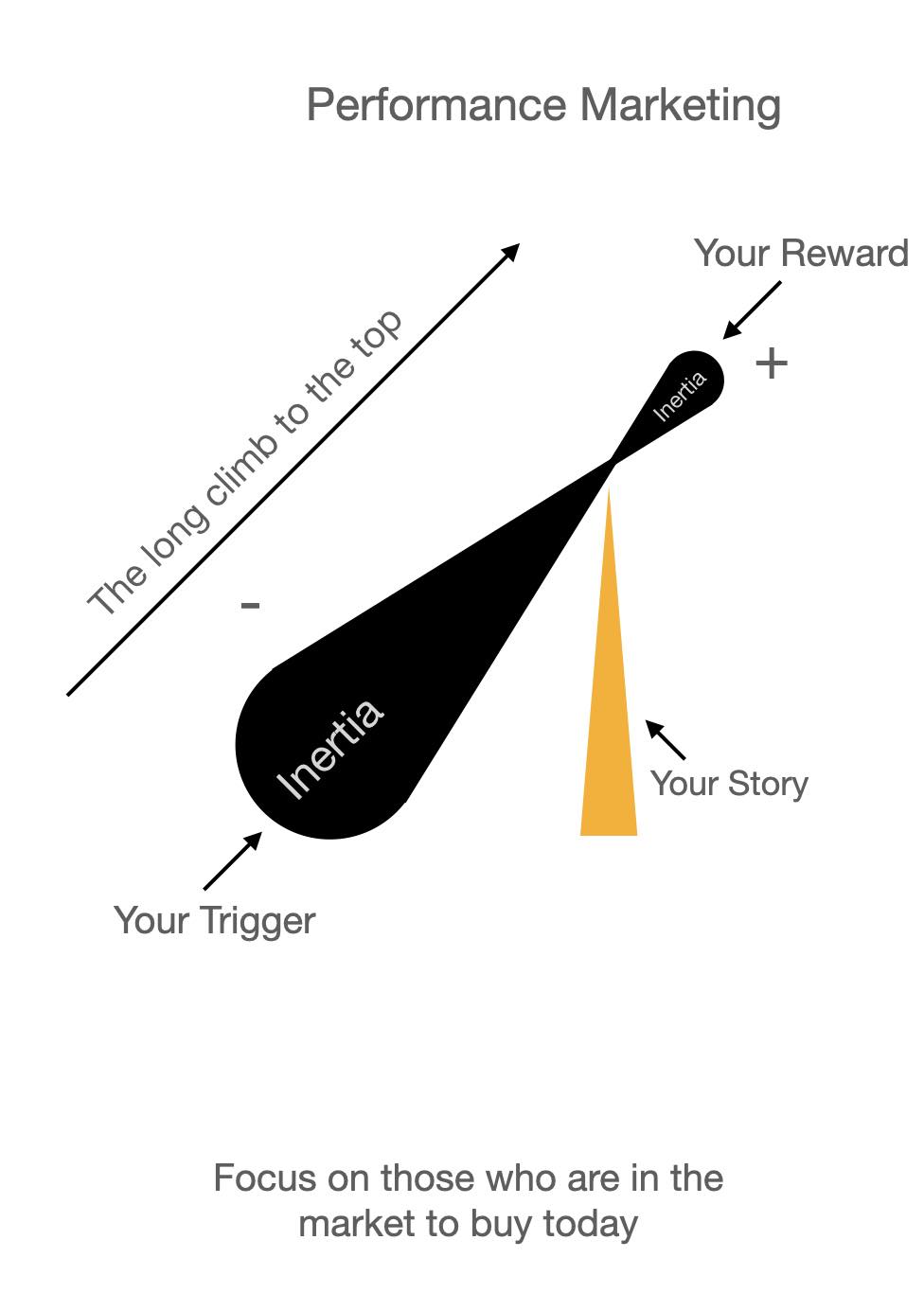
Costly Signalling
The other popular strategy is called Brand Marketing - but within the context of this new model it is the wrong term
We are going to call it 'Costly Signalling' because that is exactly what it is
BTW: For those on the outer Costly Signalling Theory proposes that expensive and/or wasteful behavioural signals like those seen in nature (e.g. the male peacock’s tail serves as an indicator of sexual fitness, increasing its chances of reproductive success) serve to instil trust between the signaller and observer. The signal is the attraction
It is the Sales and Marketing equivalent of that Hollywood Classic 'Field of Dreams' (ie. 'Build it and they will come')
Take a look at the model and you'll see the story is now positioned on the wrong side of the chasm - This is of course illogical
Because the 'Egg Timer' is still balanced in favour of market inertia
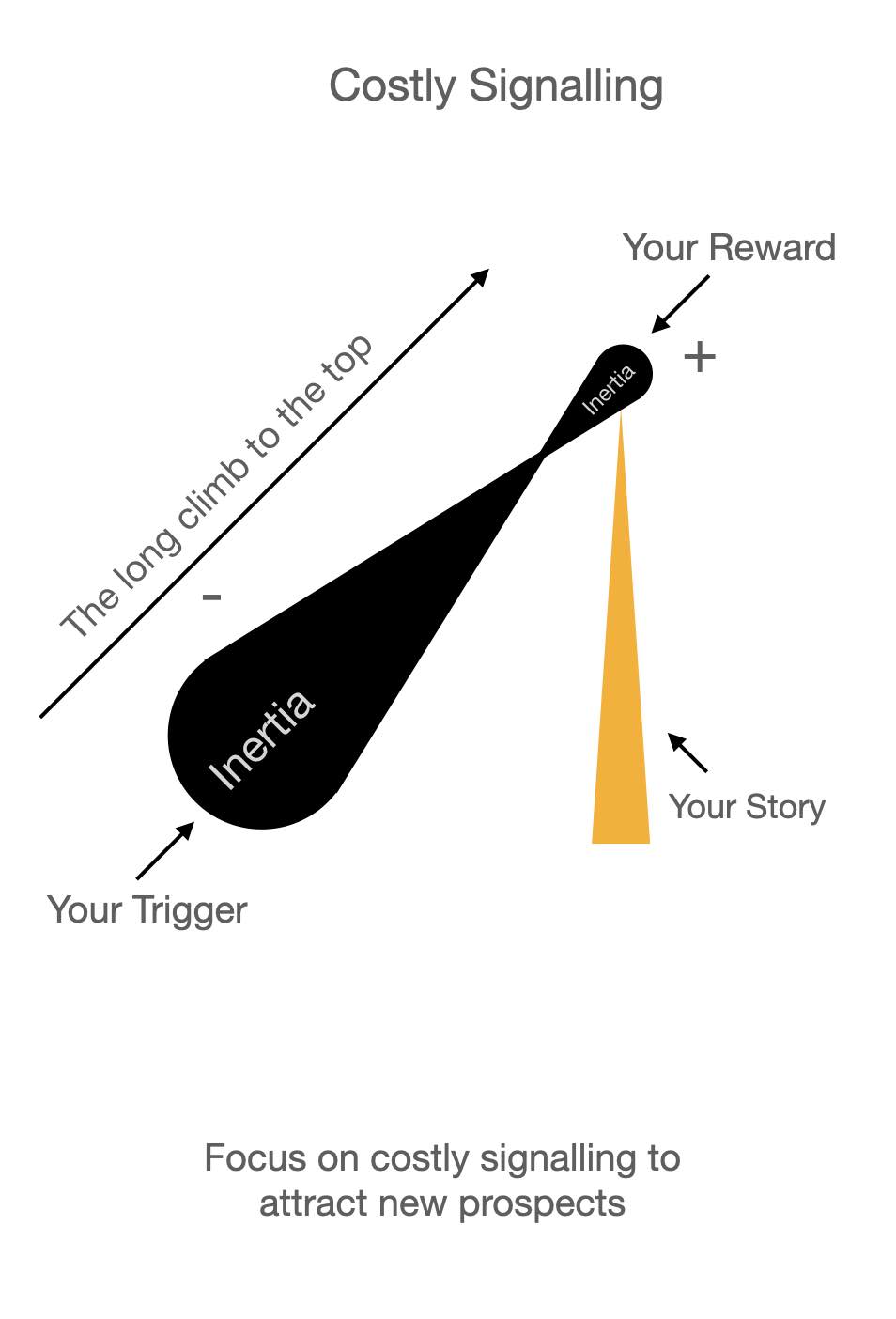
Fulcrum Marketing
OK. Now let's introduce a new idea
And... Let's call it Fulcrum Marketing
and as the name suggests it's all about pivoting the "Egg Timer" on its head
Here's how it works
When you look at the model where is the most logical place to position the story to tip the "Egg Timer" loop in your favour?
Scroll down to discover the answer
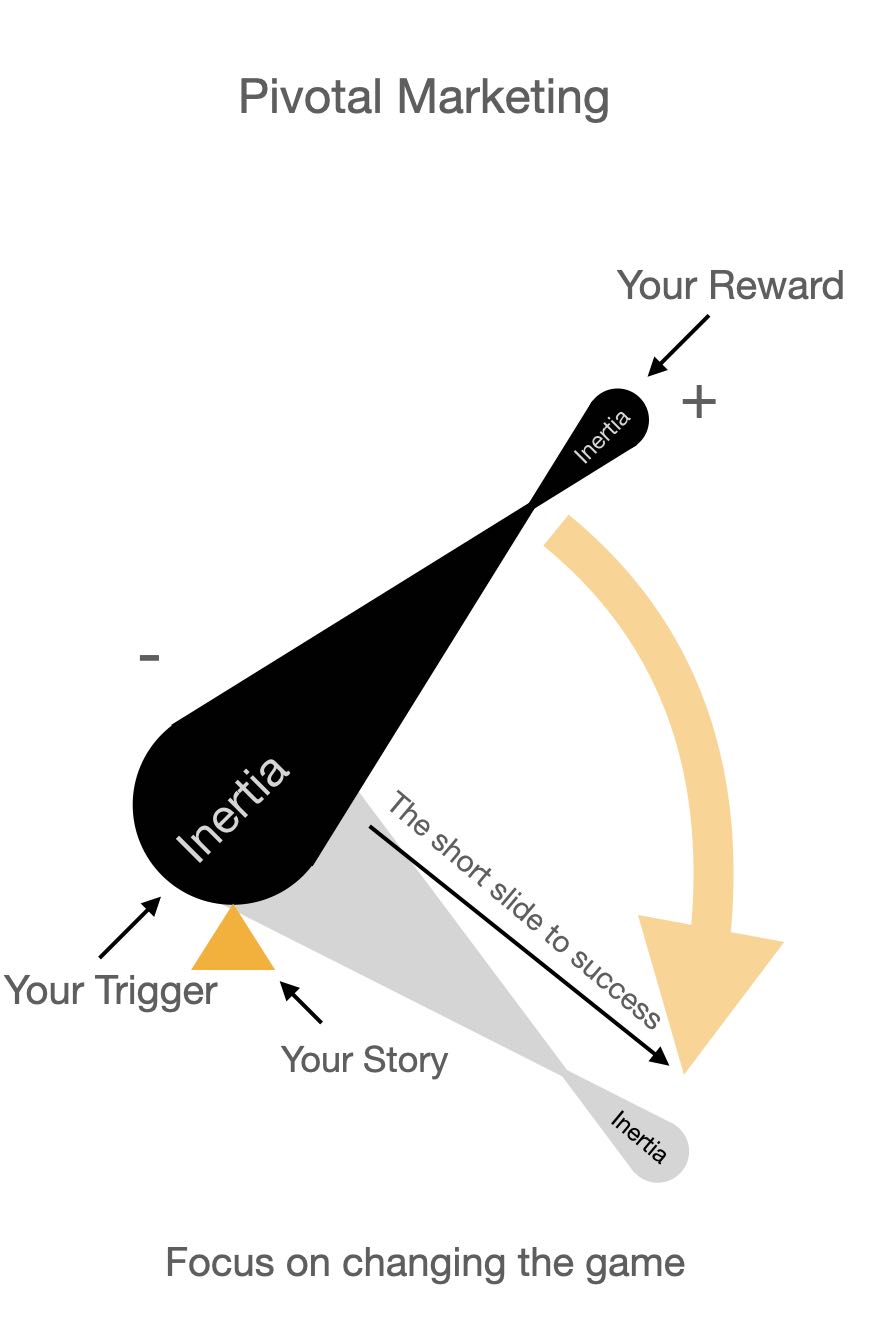
The optimal position in the model is at the base
Why? because it only takes a little bit of movement by the prospect to unbalance the 'Egg Timer' and tip the funnel in your favour
What was a hard climb to discover enlightment becomes a slippery slide into the arms of nirvana
We have leveraged the laws of gravity to our advantage to tumble the prospect through the pinch point and across the chasm
The trick of course is how you juxtapose the trigger, the story and the reward to ignite the shift in behaviour
- and yes, I have covered those ideas in more detail in Stories, Players and Games & Hooks, Responses and Rewards
Brand Marketing
And that leads us to our final strategy within the confines of the model - Brand Management
With in the context of this model Brand Marketing is the gentle balancing act of holding the 'Egg Timer' in place so the market continues to fall into your 'trap'
But it is only useful once you have achieved the pivot...
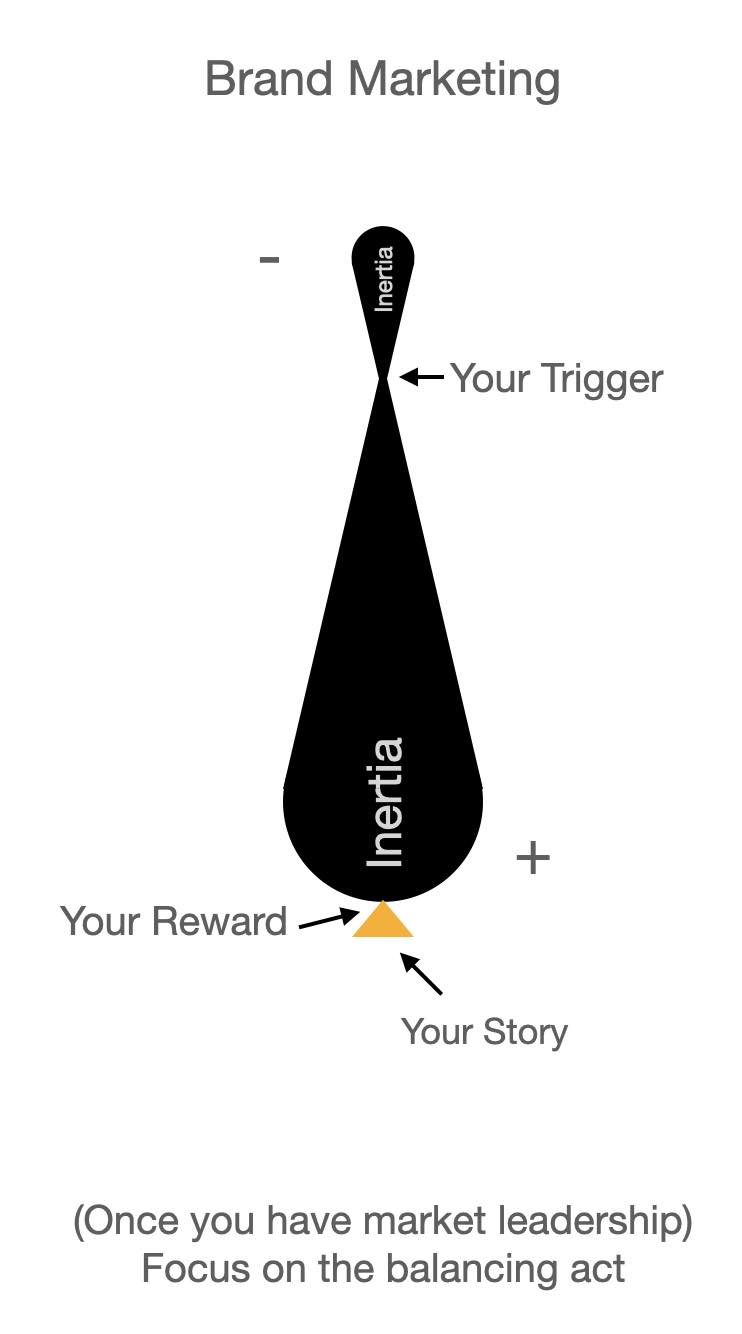
Summary
We can now see how - at least within the confines of this new marketing funnel - the debate between Performance Marketing and Brand Marketing is largely redundant
Simply because Performance Marketing is to Fulcrum Marketing what Shooting Fish in Barrel is to Deep Sea Trawling
It is the debate you have when you don't really understand the fundamentals of marketing

The trick is knowing where to position your story, your trigger and your reward so you can tip the market in your favour
... and almost inevitably this means shifting the story away from where the brand and the transaction takes place to where the customer begins their journey
The emphasis being on stories that nudge the prospect to take short steps towards tipping the 'Egg Timer' over
Understand this and you'll see that endless thread on the phase changes was never about trying to out think, the way marketers think, about how the customer thinks, they think, about thinking, when it comes to thinking, about thinking, about brands
It was simply about discovering a new way to tip the balance of power in your favour
The Case Study
After posting this it became obvious that it lacked a case study
The obvious case study is ChatGPT... because it is front of mind at this time
So let's take a stab at mapping ChatGPT to the model
But before I do I want to introduce some key ideas to the model
These are the Anchor, FOMO and the Zeitgeist
The anchor becomes a substitute for the story
As to the question why? I'll refer you to something I wrote a year ago on What Bitcoin can teach us about marketing?
But basically it comes down to the idea you can move the anchor to change the story
This adjusted model is a merging of the Phase Changes with some core ideas about marketing (e.g. Anchors, Extrinsic Value, Scarcity and Social Proofs)
FOMO is of course the ultimate reward
The social proof is the trigger - I do it because they do it...
As you can see the model now describes how earlier versions of AI (ThinK: Watson & AlphaGo) positioned themselves using costly signalling
Meanwhile ChatGPT moved the anchor to pivot the Zeitgeist - Just like Facebook, Snapchat, TikTok etc had done a generation before with Social Media
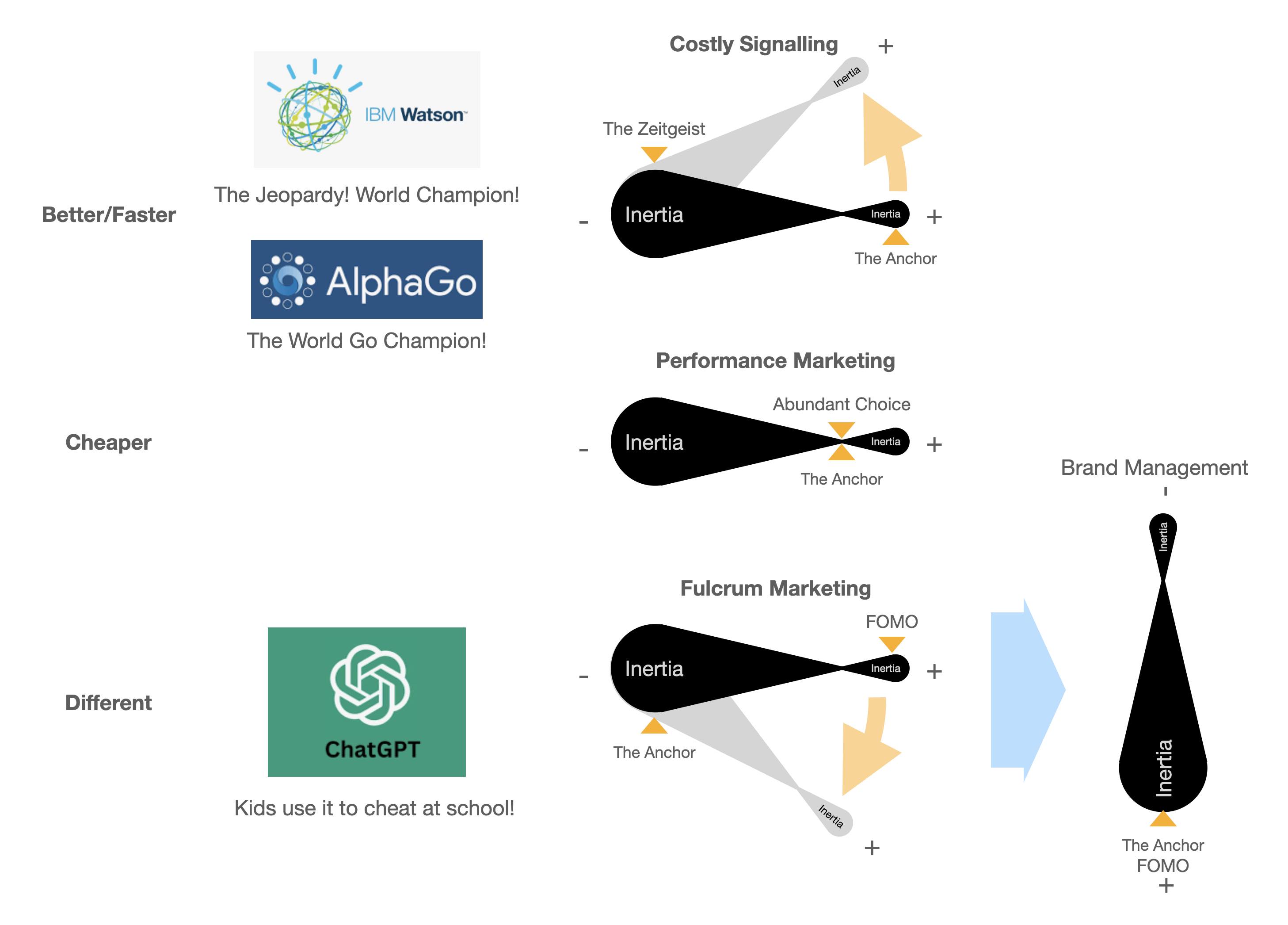
What makes the ChatGPT case study more compelling is it took up until version 3.5 of the product to make the switch in strategy. Up until then it had followed the 'Better/Faster" pitch and gone nowhere in attracting market share
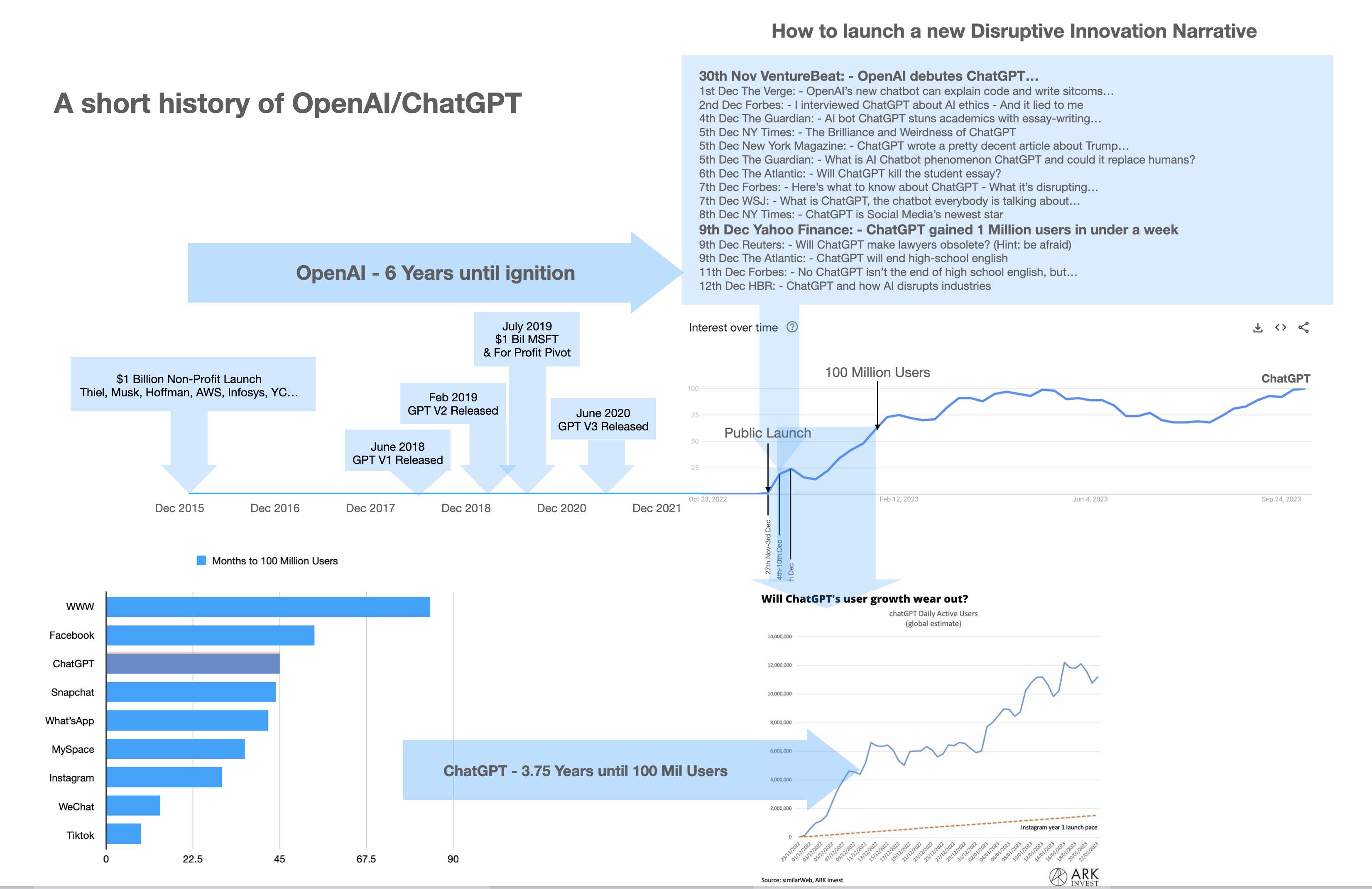
Closing Thoughts?
I guess I subscribe to the mantra all models are useful until they are not
In the context of sales and marketing, new models are useful because they encourage a new way of thinking
and only by encountering a new way of thinking can we begin to experiment with a new way of doing
The fulcrum model is about demonstrating the balance of power resides with the prospect. Your task is to motivate them to take those small steps that can disrupt the equilibrium of the model at rest... the good news is there are many, many creative ways to do that